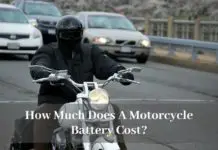
It’s that time of the year again. You’re thinking of getting away from this city that is sucking the life out of you. You just want some alone time in the woods or next to the lake and enjoy the Northern Lights without light pollution from the city.
You could also be up for a long-planned holiday and you need to get your motorcycle, jet ski or quad bike into shape. You tried cranking over the engine but it just let out a little whine like a demoralized pup, or just clicked once and just gave up trying to make you happy. The battery is dead and you need to recharge it.
How would you charge a 6-volt battery? Simple, use a charger. However, you can’t just use any charger available out there. There are different types of 6-Volt batteries and you have to use the correct type of charger for each type.
The most common types are those found in recreational vehicles such as motorcycles. Those utilize lead-acid like car batteries. The other common type is found with power tools and use nickel-cadmium or lithium-based batteries and require a different charger.
4 Steps to Charge Your 6v Battery
For you to successfully charge that battery, you have to take several steps:
1. A Little Due Diligence
Before getting yourself a charger, it’s time to do some light reading. Take out the battery from the vehicle and go through the labeling on the sides. This labeling will usually indicate the type of material used in manufacturing of the battery.
A lead-acid battery will usually be labeled using the initials LA or SLA. A nickel battery will be labeled with the acronym NiCd for Nickel Cadmium or NiMH for Nickel Metal Hydride. A lithium battery will be labeled Li-Ion.
You now have two criteria you can use to get a charger. The type of material and the voltage.
2. Make Some Preparations
One you get your charger proceed to plug it into the wall mains, but don’t turn it on yet. You will notice it comes with two leads in different colors. The red lead is meant for the positive terminal, and the black for the negative. All you now need to do is to clamp the correct clip to the correct terminal.
3. Double Check Your Settings
Most battery chargers come with the ability to charge a variety of batteries. The simplest of them have a variable feature than can at least charge both 6-volt and 12-volt batteries. Set the charger to the correct voltage of your battery.
This is very important. Charging your battery at a higher voltage will result in the battery charging fast, but it will also damage the battery. It would be better to charger the battery at a lower voltage even if it takes a very long time to achieve full charge.
You can now turn on your charger. If the model you picked has indicator lights, watch them for a few minutes to confirm whether indeed the battery is charging.
4. We Fave Lift Off
Once you have confirmed that the battery is charging, you can move on to doing other tasks. Check back in two hours to see if the battery has achieved full charge. Nickel and Lithium based batteries will usually indicate when they are full.
A lead-acid battery however, will not indicate whether it is fully charged. Also, a lead acid battery will take anywhere from 14 to 16 hours to achieve full charge. Usually, around 70 percent of battery capacity is attained after eight hours. Once at this point, it becomes much harder for the battery to convert the current into stored energy. This point is known as the saturation charge.
What a saturation charge means is, the diodes in the battery can no longer take in more charge and lose it more easily, and that’s why it takes longer for it to charge the remaining 30 percent.
Can You Charge a 6-Volt Battery with a 12-Volt Charger?
As mentioned earlier, charging a battery using a higher voltage than what it was designed for could end up damaging the battery. In this case, charging a 6-volt battery with a 12-volt charger could end up damaging the battery.
However, as a lover of physics and other sciences, nothing is truly impossible. For this, you would need to get some few things right and you will need your geek hat as well.
Now, I can revise the earlier statement. Yes, a 12-volt battery can charge a 6-volt battery, but with caveats. For this to work, you will need a couple of things: a H4 halogen bulb and a couple of heavy gauge wires.
The idea here is to reduce the amount of voltage that is being fed into the battery, so that it only gets the required voltage with none of the damaging effects. This calls for some form of resistance in between the charger and the battery. This resistance will reduce the amount of voltage flowing through to the battery.
For you to charge the battery, you will need those heavy wires to connect the bulb in series with the battery. The bulb, which is rated at 6 volts, will siphon off those volts off the current flowing through the leads, leaving 6 volts to flow into the battery. This works best when the low beam of the bulb is burnt out, leaving the high beam working.
Although this procedure is quite safe, it requires constant monitoring. The bulb could get extremely hot and if it is lying on something flammable, well, you know how the story goes. You will also need to have a voltmeter, or a multimeter on standby. This will be to constantly check the voltage flowing through to the battery. The bulb could sometimes let through more voltage than required.
As this arrangement also doesn’t let you know whether the battery is full, you will have to be on constant look out for gassing around the battery, and even the battery becoming hotter than 10 degrees above the ambient temperature. This heating could lead to damaging the battery.
Sources:
1. How can I charge a 6 volt battery with a 12 volt car? – Quora
2. Charging a 6volt battery with a 12volt charger – circuit help please. – Electronics Point





